The NVIDIA RTX™ 5000 Ada Generation GPU is supported by the NVIDIA Ada Lovelace architecture and features a 4nm manufacturing process. It belongs to the high-end products within the Ada Lovelace architecture. The NVIDIA RTX 5000 Ada Generation maintains the same exterior design as the NVIDIA RTX A5000, boasting 12,800 CUDA cores, 400 4th generation Tensor Cores, 100 3rd generation RT Cores, and a massive 32GB of ECC memory. In this test, our primary focus is the performance comparison of the RTX 5000 Ada against the RTX A5000 in graphical interaction and rendering.
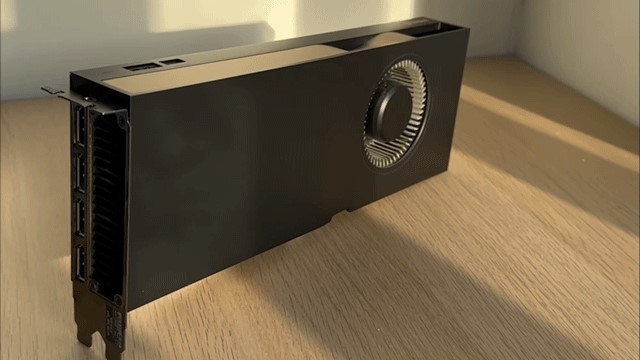 ▲ NVIDIA RTX 5000 Ada Generation
▲ NVIDIA RTX 5000 Ada Generation
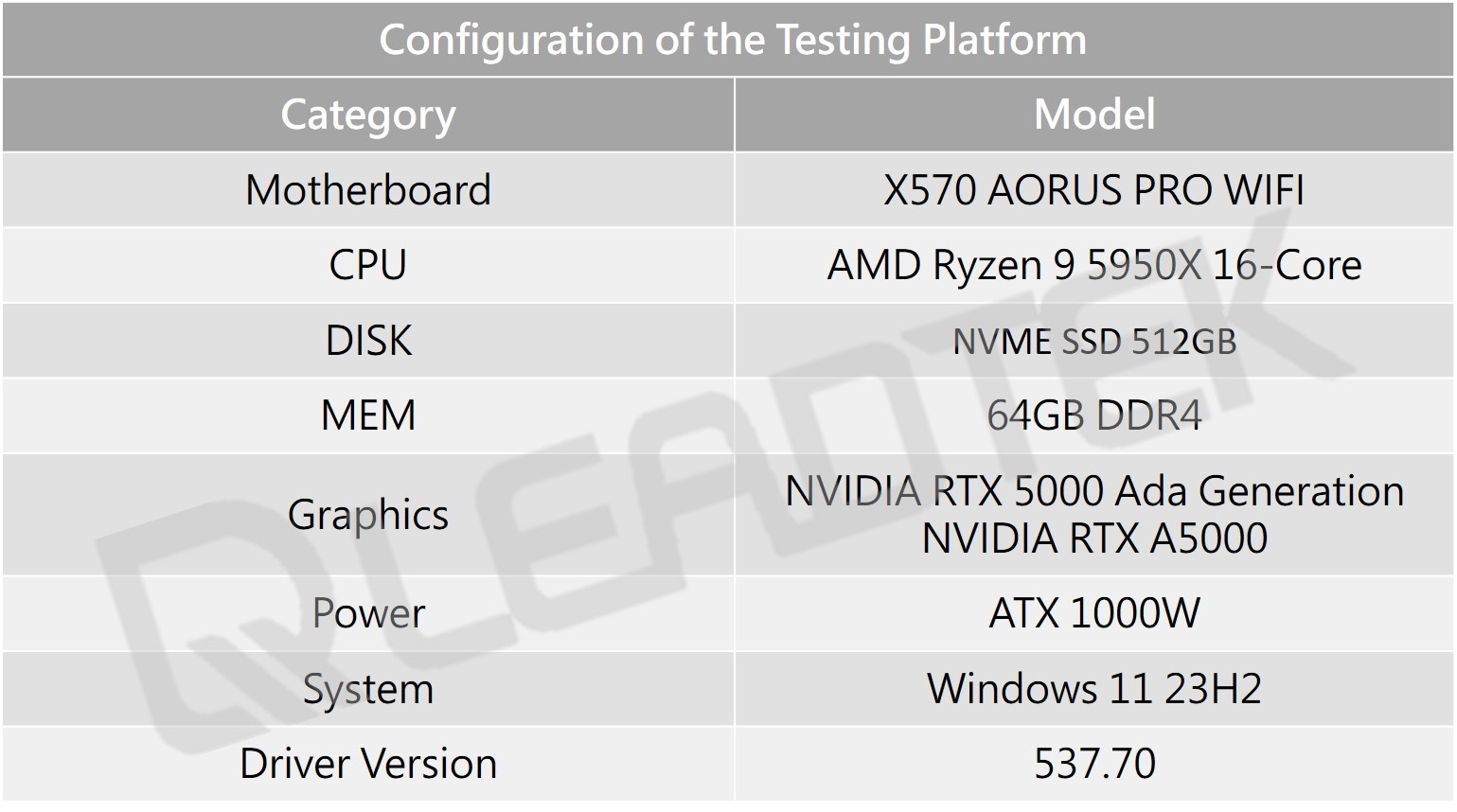
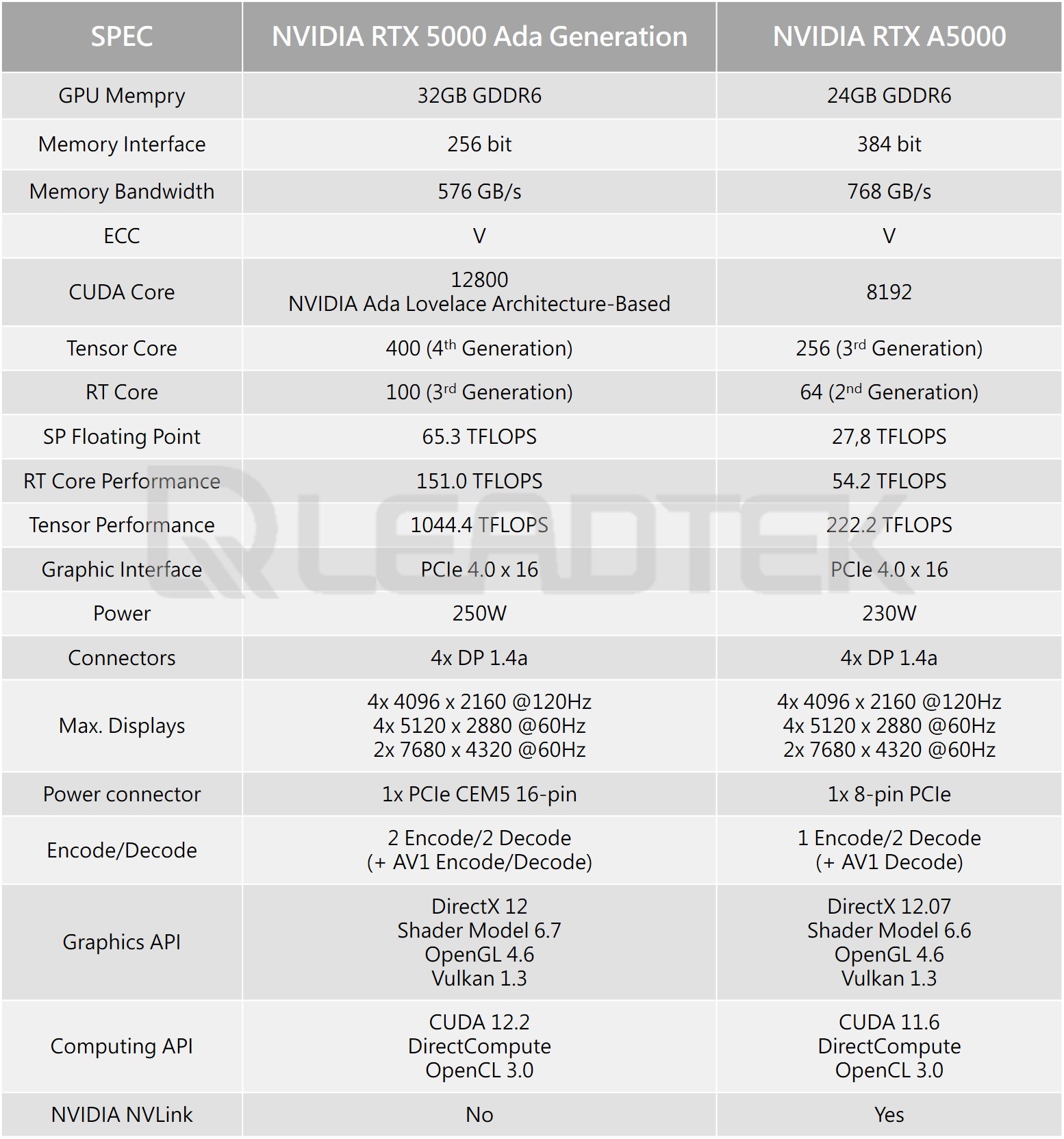
CUDA-Z, akin to CPU-Z and GPU-Z, provides an intuitive display of GPU performance information.
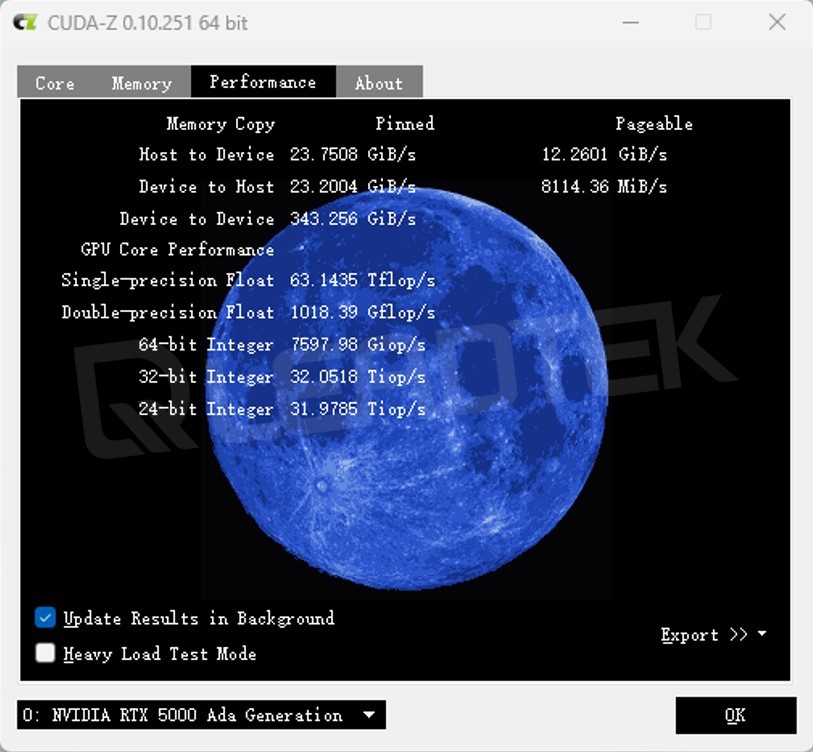 ▲ Software test screenshot
▲ Software test screenshot
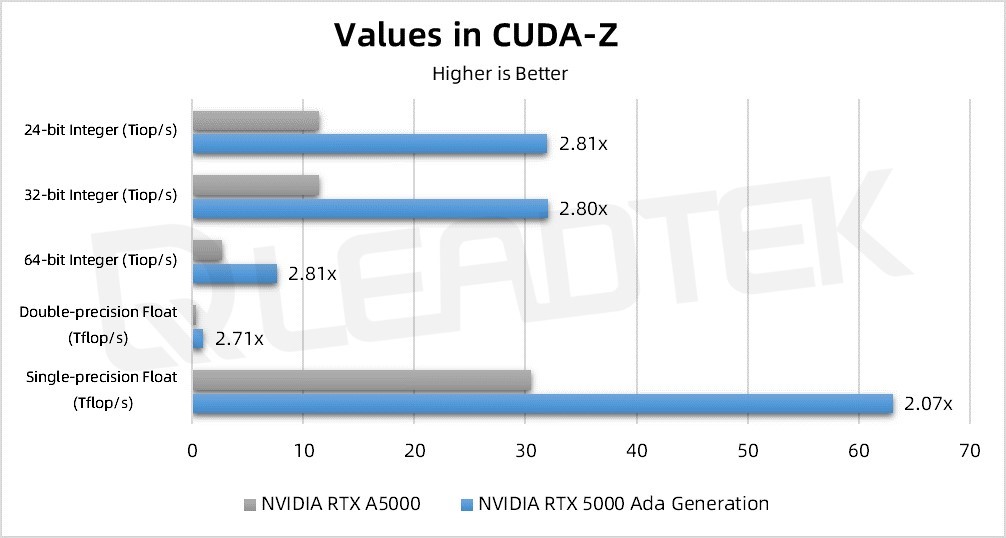 ▲ Test result charts
▲ Test result charts
Single-precision floating-point operation performance is a crucial indicator for GPUs, used in many calculations. From the test results, the RTX 5000 Ada achieves a performance of 63.1T, while the RTX A5000 only reaches 30.5T. Thus, the single-precision floating-point operation performance of the RTX 5000 Ada is 2.07 times that of the RTX A5000.
SPECviewperf 2020 v3 primarily evaluates professional graphics performance of graphics cards, including common software like 3ds Max, Maya, Catia, SNX, SolidWorks, Creo, and medical and energy simulation performance tests. It scores by analogizing the speed of software scene interaction, ultimately determining the relative graphics interaction performance of the graphics card.
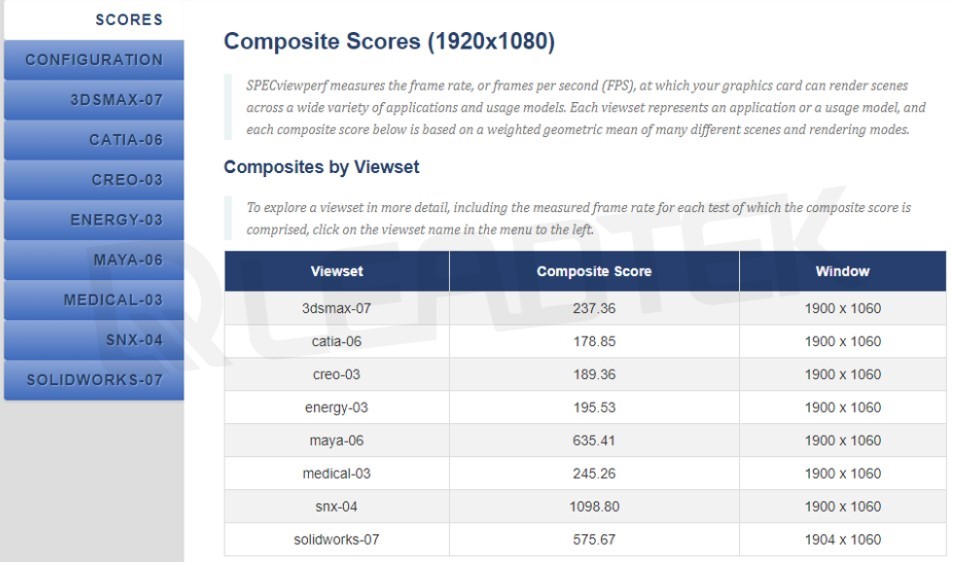 ▲ Software test screenshot
▲ Software test screenshot
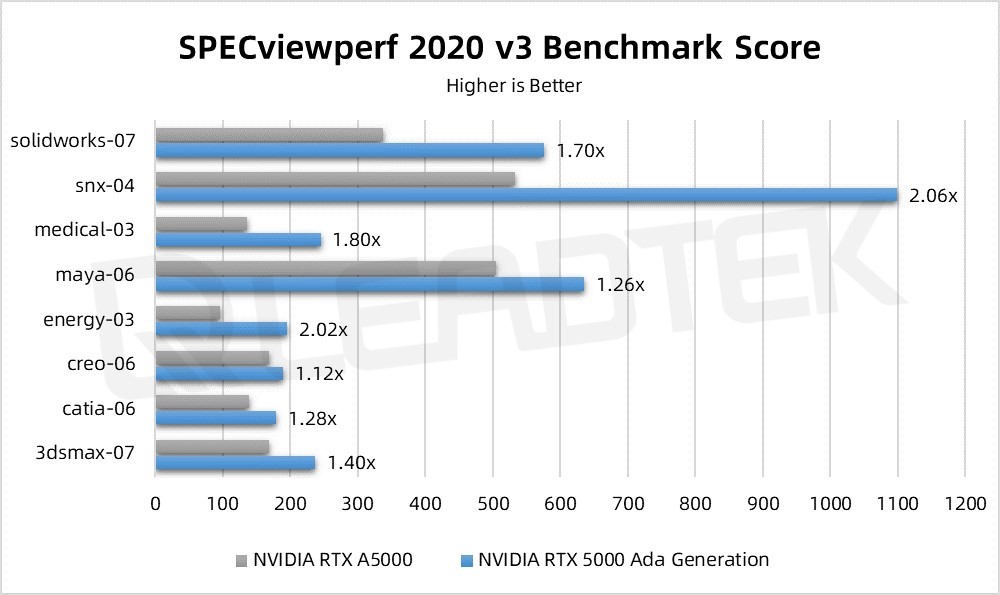 ▲ Test result charts
▲ Test result charts
From the SPECviewperf 2020 v3 test results, it's evident that the RTX 5000 Ada shows a noticeable improvement in graphics interaction performance compared to the RTX A5000. The most improved project is in SNX, where the RTX 5000 Ada's performance reaches 2.06 times that of the RTX A5000.
Superposition is a Benchmark for testing GPU real-time rendering performance. The camera roams through 3D scenes, rendering movements, lighting, and textures in real-time. This test contrasts 4K resolution real-time rendering using DirectX and OpenGL graphics APIs.
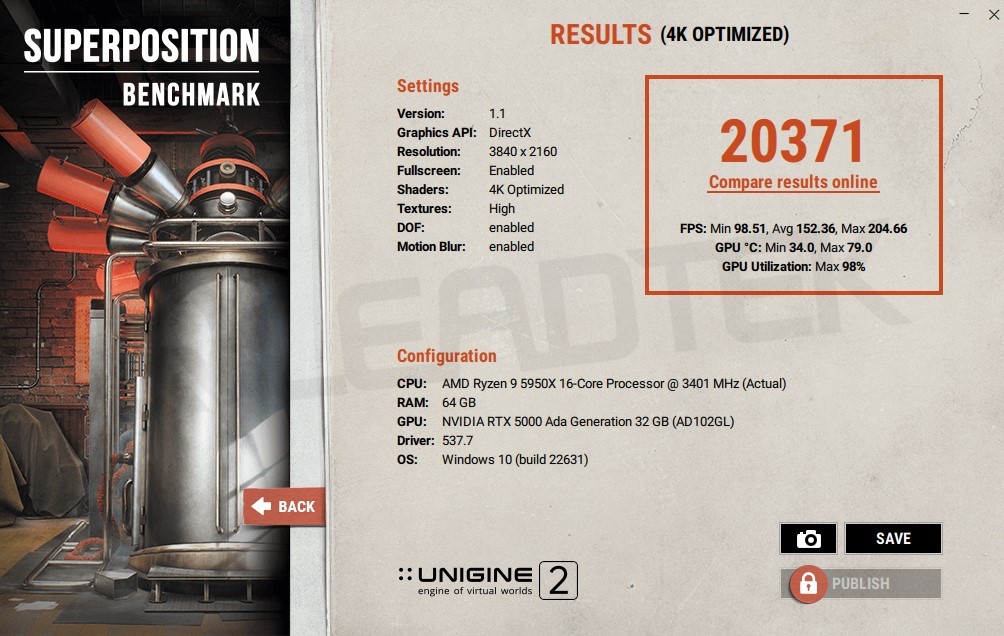 ▲ Software test screenshot
▲ Software test screenshot
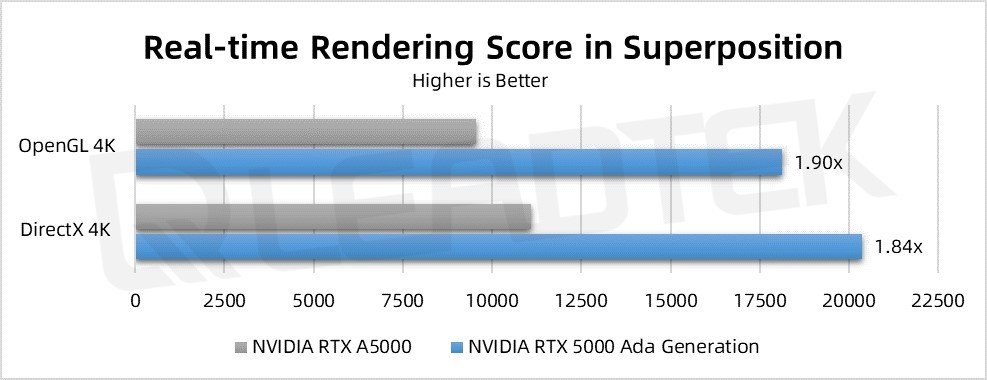 ▲ Test result charts
▲ Test result charts
The test results show that in the Superposition 4K real-time rendering using DirectX and OpenGL graphics APIs, the RTX 5000 Ada's performance is 1.84 times and 1.90 times that of the RTX A5000, respectively.
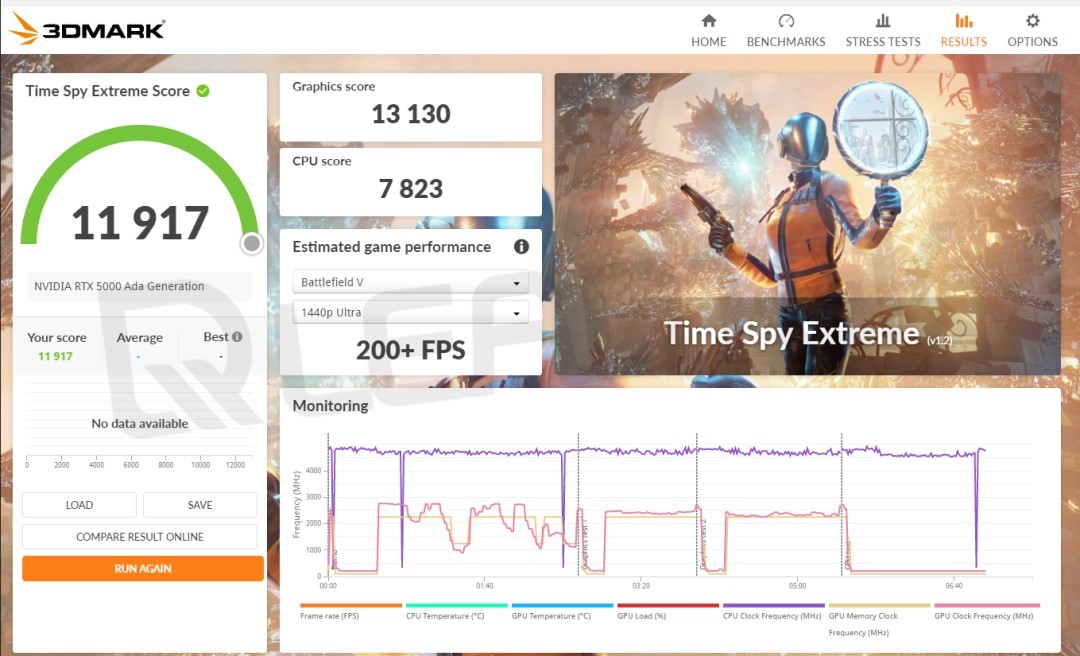 ▲ Software test screenshot
▲ Software test screenshot
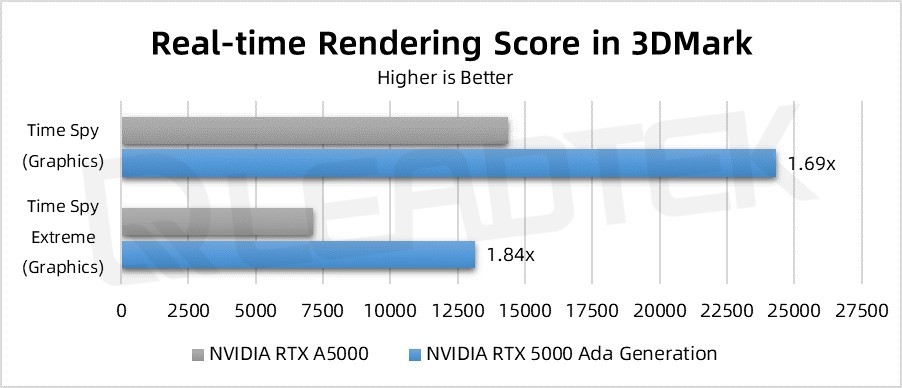 ▲ Test result charts
▲ Test result charts
In 3DMark's Time Spy Extreme 4K and Time Spy 1080P rendering tests, the RTX 5000 Ada performs 1.84 times and 1.69 times better than the RTX A5000, respectively.
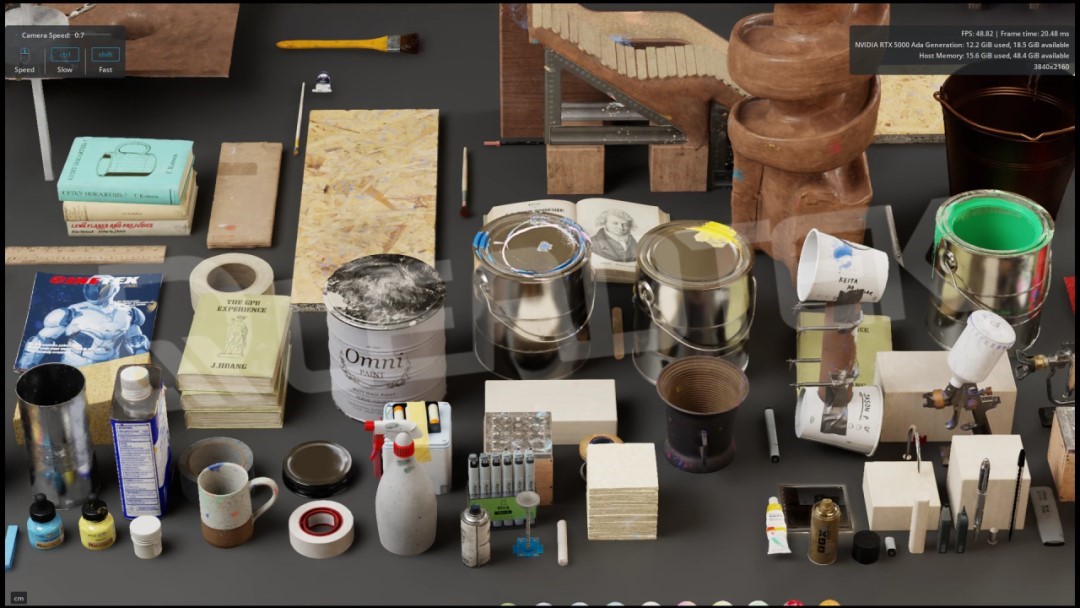 ▲ Rendering screenshot
▲ Rendering screenshot
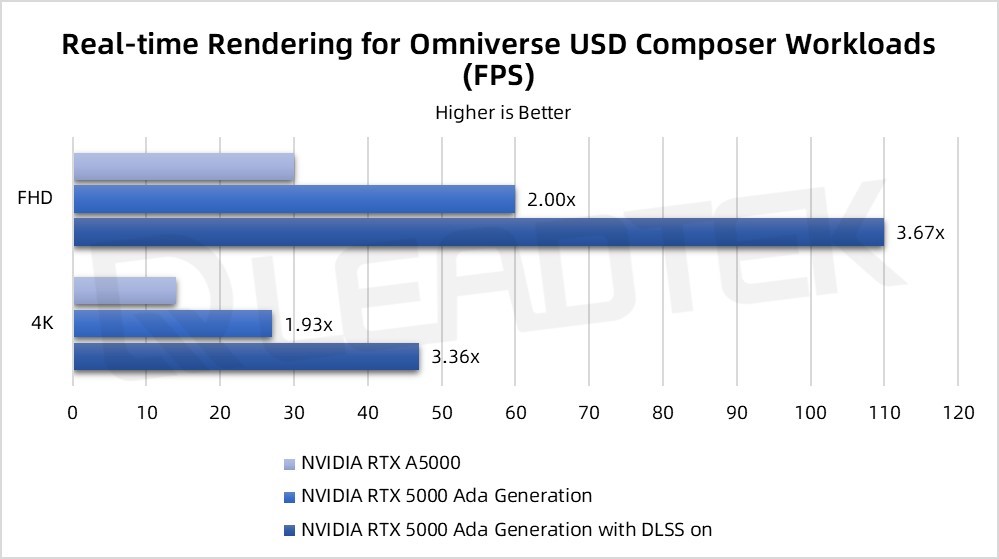 ▲ Test result charts
▲ Test result charts
In NVIDIA Omniverse USD Composer's real-time ray tracing rendering, owing to its support for DLSS Frame Generation, the RTX 5000 Ada demonstrates higher frame rates. In 4K resolution, it achieves 47 frames of real-time rendering, which is 3.36 times that of the RTX A5000 in the same scene; in FHD resolution, it achieves 110 frames, 3.67 times that of the RTX A5000.
 ▲ Rendering screenshot
▲ Rendering screenshot
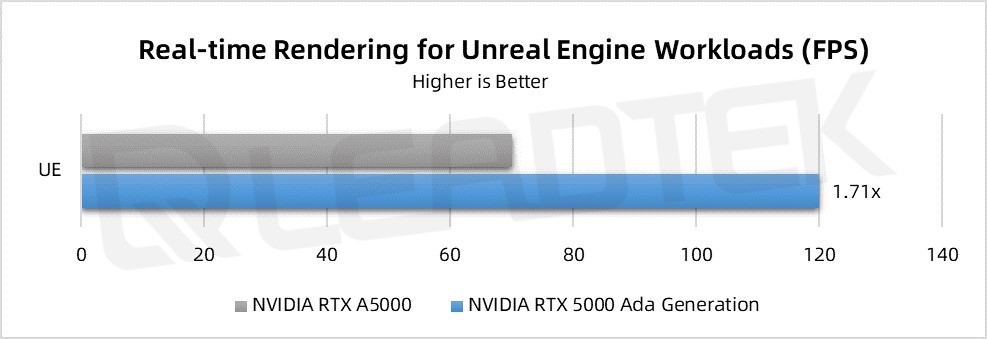 ▲ Test result charts
▲ Test result charts
In the test of UE's real-time rendering performance, the RTX 5000 Ada exhibits 1.71 times the performance of the RTX A5000, showing significant improvement over the previous generation product.
Offline rendering finds broad applications in media entertainment, design manufacturing, and architectural industries. Many renderers support GPU rendering, where rendering speed depends on the GPU's computational speed.
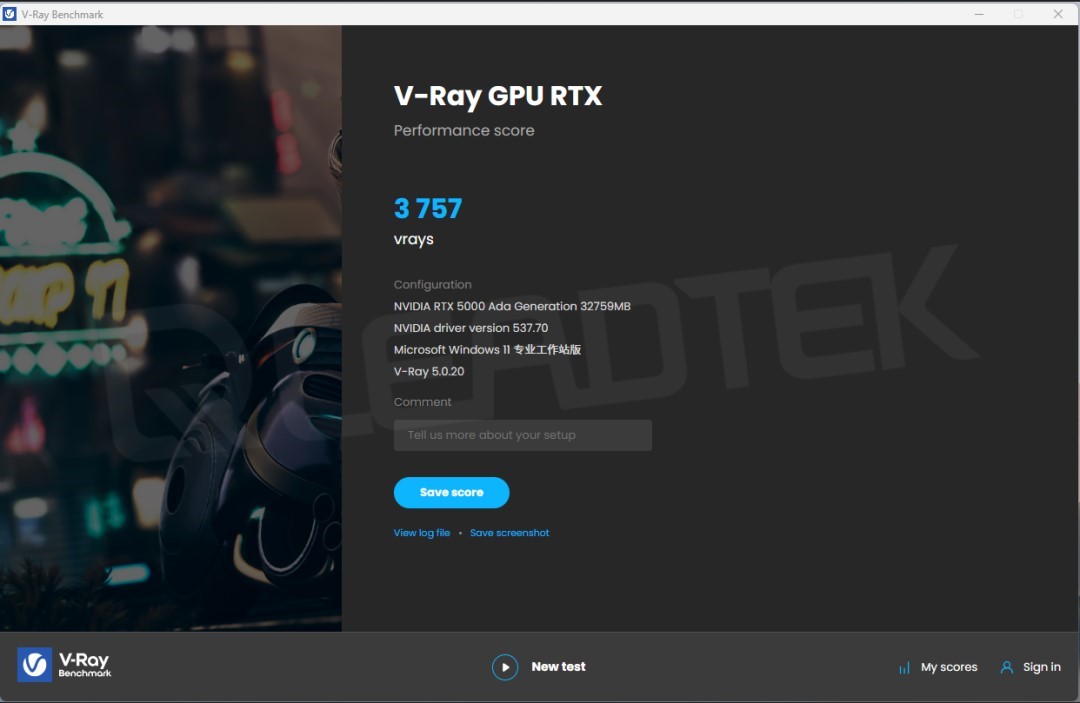 ▲ Software test screenshot/p>
▲ Software test screenshot/p>
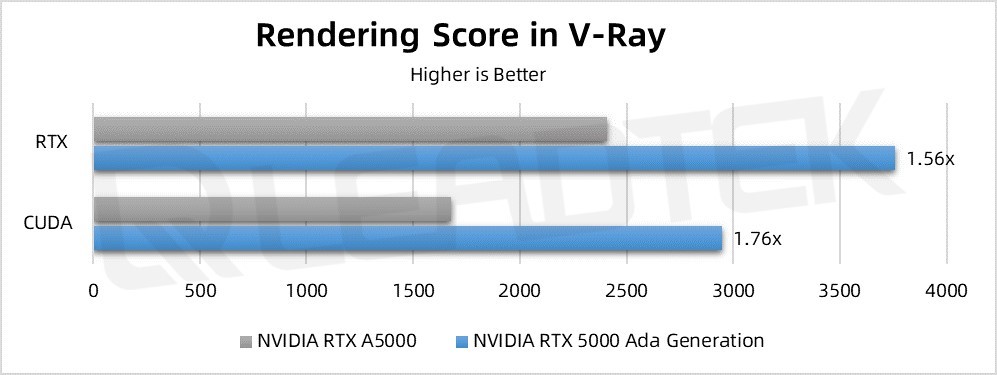 ▲ Test result charts
▲ Test result charts
In the CUDA rendering test, the RTX 5000 Ada's offline rendering performance is 1.76 times that of the RTX A5000. In the GPU RTX rendering test, the RTX 5000 Ada surpasses the RTX A5000 by 1.56 times.
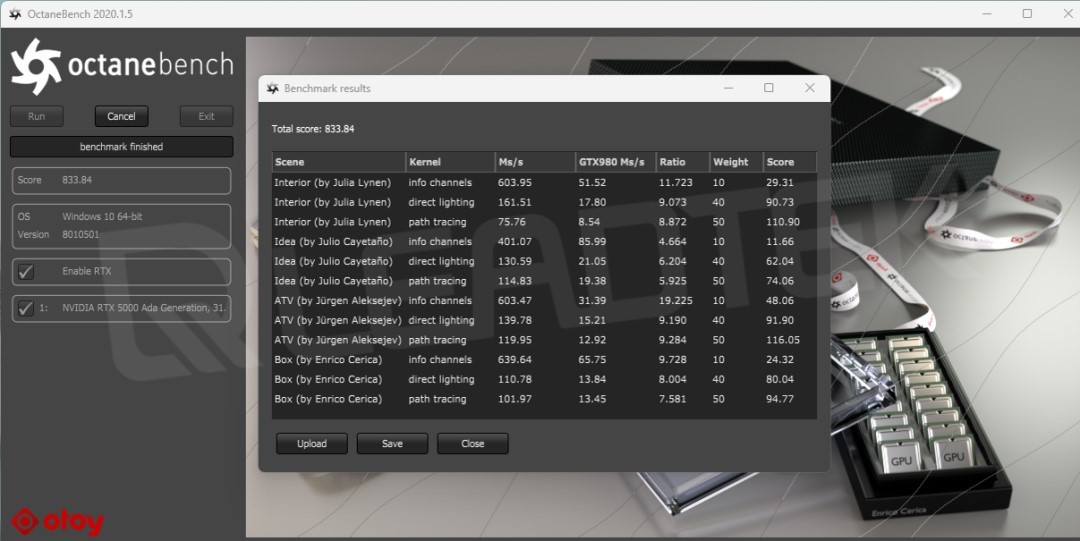 ▲ Software test screenshot
▲ Software test screenshot
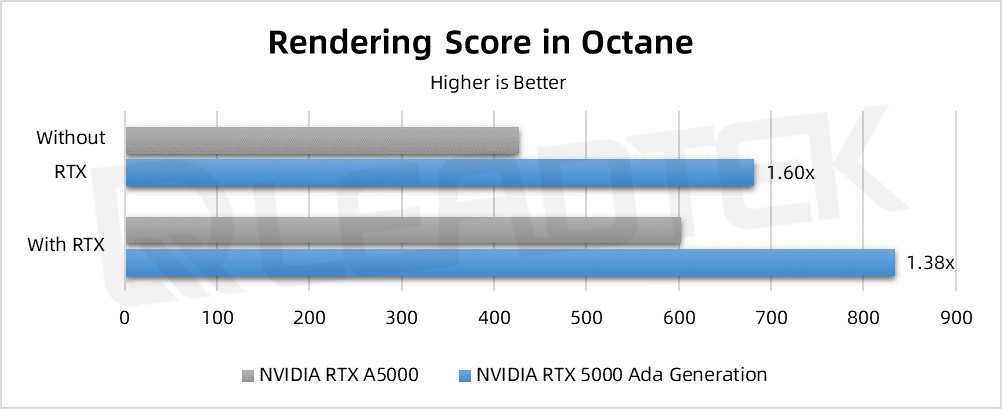 ▲ Test result charts
▲ Test result charts
In the OC Benchmark test, using RTX rendering, the RTX 5000 Ada's offline rendering performance is 1.38 times that of the RTX A5000. Without using RTX rendering, the RTX 5000 Ada surpasses the RTX A5000 by 1.60 times.
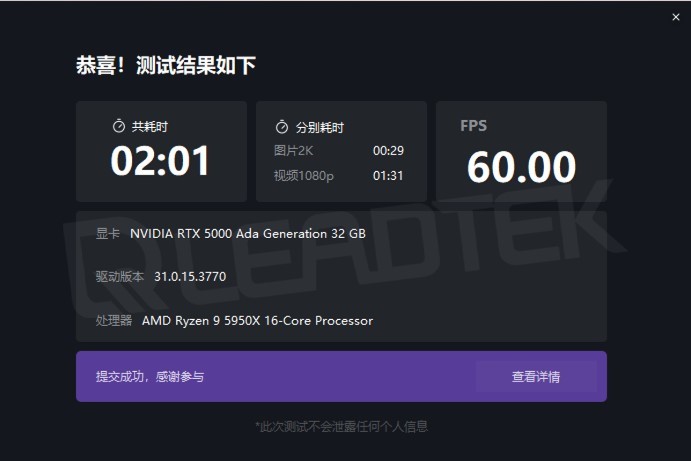 ▲ Software test screenshot
▲ Software test screenshot
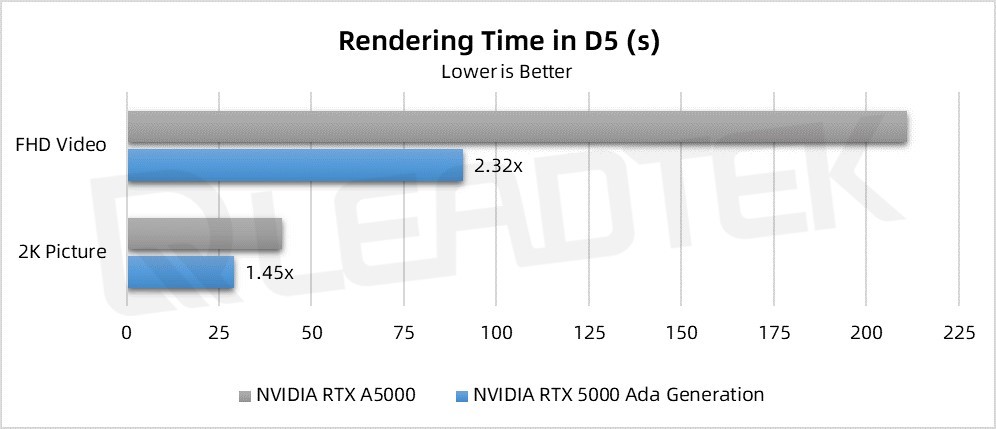 ▲ Test result charts
▲ Test result charts
In FHD video rendering, the RTX 5000 Ada's offline rendering performance is 2.32 times that of the RTX A5000. In 2K image rendering, the RTX 5000 Ada surpasses the RTX A5000 by 1.45 times.
This test primarily compares the graphics and rendering performance of the graphics card.
The all-new NVIDIA RTX 5000 Ada Generation graphics card boasts more CUDA cores, thus providing more robust support for CAD graphic interaction modeling and 3D scene rendering. Notably, there's a significant improvement in software like Siemens NX.
Based on the new NVIDIA Ada Lovelace architecture, the RTX 5000 Ada graphics card can support DLSS Frame Generation. This enables a nearly 2-fold increase in frame rate when using RTX-Realtime rendering in Omniverse USD Composer, providing close to 4 times the support of the RTX A5000. It's foreseeable that in future 3D visualization projects, DLSS will be an efficient solution for rendering frame rate issues. The NVIDIA Ada Lovelace architecture-supported professional graphics card with DLSS support will become the rendering mainstay. Additionally, for renderers using CUDA or RTX rendering technology, the RTX 5000 Ada provides significantly enhanced rendering performance.